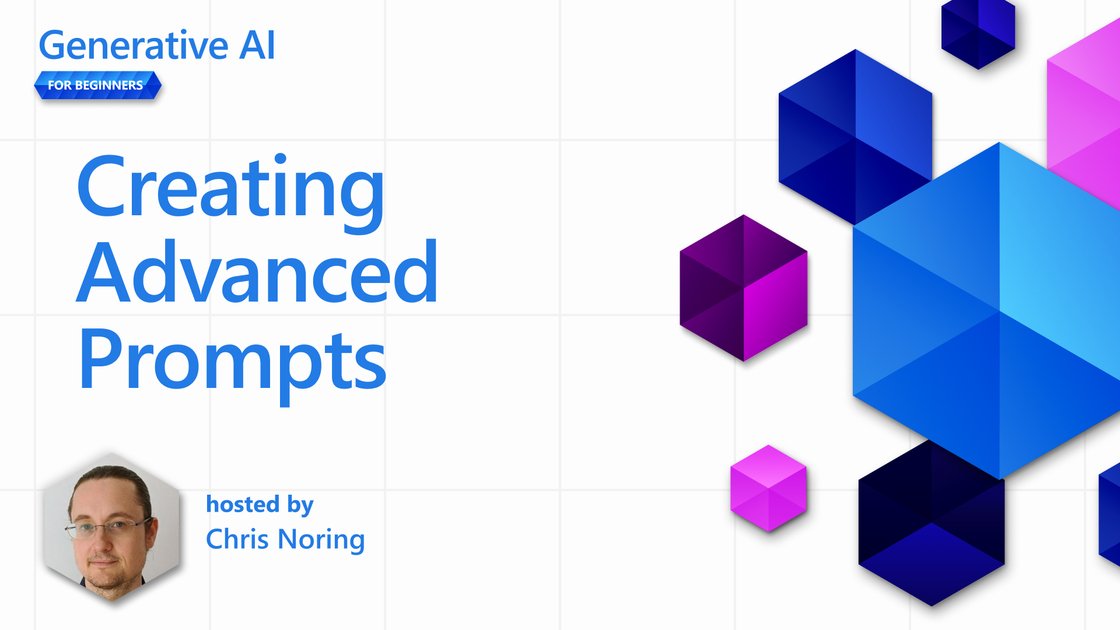🚨 BREAKING: Microsoft just dropped an 18-episode series called "Generative AI for Beginners". Ideal for beginners, developers, and AI enthusiasts looking to build a solid foundation. Here’s a breakdown (Save this👇):🧵

Episode 1: Introduction to Generative AI and LLMs – Carlotta Castelluccio introduces Generative AI and large language models, explaining their inner workings and how they are revolutionizing industries (with a focus on education)

Episode 2: Exploring and Comparing Different LLMs – Carlotta Castelluccio and Pablo Lopes explore various types of large language models, their use cases across industries, and how businesses can harness their potential

Episode 3: Using Generative AI Responsibly – Explains why responsible AI is crucial for generative applications, covering how to ensure AI outputs are fair and non-harmful, and steps to improve the responsible use of AI

Get 100% FREE AI and Tech news: 👇
Episode 4: Understanding Prompt Engineering Fundamentals – Nitya Narasimhan walks through the fundamentals of prompt engineering, teaching how to craft effective prompts and iterate on them to improve generative AI results

Episode 5: Creating Advanced Prompts – Chris Noring delves into advanced prompt-engineering techniques to optimize prompts and improve AI response quality, demonstrating these methods with real-world examples

Episode 6: Building Text Generation Applications – Covers the core concepts of text generation using OpenAI and shows how to build a text-generation application step by step, adjusting parameters like prompt, temperature, and tokens for desired output

Episode 7: Building Chat Applications – Jasmine Greenaway demonstrates how to efficiently build and integrate AI-powered chat applications into existing systems, including customization, fine-tuning, and monitoring strategies

Episode 8: Building Search Apps (Vector Databases) – Dave Glover explores building semantic search applications using vector embeddings. This episode shows how to create a search app (for an education startup’s video library) that returns relevant video segments by indexing and querying text embeddings

Episode 9: Building Image Generation Applications – Chris Noring and Pablo Lopes explain how to generate images from text descriptions using models like DALL-E and Midjourney, and walk through building an image-generation app step by step

Episode 10: Building Low-Code AI Applications – Someleze Diko shows how to leverage low-code development platforms (Microsoft Power Platform) with generative AI. This episode covers using AI features like Copilot and AI Builder to create AI-powered apps and workflows without extensive coding

Episode 11: Integrating External Applications with Function Calling – Korey Stegared-Pace introduces function calling in the context of LLMs. It explains what function calling is, demonstrates how to implement an OpenAI function call, and shows how to integrate it into an application to extend AI capabilities

Bonus: Decktopus AI! Templates, designs, and content — auto-generated in seconds. Start here →
Episode 12: Designing UX for AI Applications – Bethany Jepchumba discusses how to design user experiences for AI-driven applications, emphasizing the importance of user trust and transparency for responsible AI. It covers understanding user needs and designing AI features for collaboration and feedback

Episode 13: Securing Your Generative AI Applications – Highlights security considerations for AI systems. Korey Stegared-Pace outlines common risks and threats to generative AI applications and provides methods and best practices for securing AI systems against these threats

Episode 14: The Generative AI Application Lifecycle – Pablo Lopes explains the generative AI lifecycle, a framework to continually develop, deploy, monitor, and improve AI applications. This session covers the shift from traditional ML Ops to LLM Ops (Large Language Model Ops), including tools, metrics, and evaluation techniques for maintaining AI solutions

Episode 15: Retrieval Augmented Generation (RAG) and Vector Databases – Bethany Jepchumba delves into how to “ground” LLMs with your own data via Retrieval Augmented Generation. The lesson explains what RAG is, why it’s useful, how to create and use a vector database for embeddings, and how to integrate RAG into an application

Episode 16: Open Source Models and Hugging Face – Covers the landscape of open-source large language models. Korey Stegared-Pace discusses the benefits of open-source LLMs versus proprietary models, and explores how to find and use open models (e.g., on Hugging Face or Azure AI Studio), including notes on fine-tuning open models

Episode 17: AI Agents – Introduces AI Agents, where LLMs can take actions via tools or frameworks. Korey Stegared -Pace explains what AI agents are, reviews four different agent frameworks (and their unique features), and discusses when to use agent-based approaches in generative AI applications

Episode 18: Fine-Tuning LLMs – Nitya Narasimhan covers fine-tuning of pre-trained language models to improve performance on specific tasks. This final episode explains what fine-tuning is, when it’s useful, and how to fine-tune an LLM, while noting the limitations of fine-tuning

That's a wrap! Follow me @LawrenceNG for more of these. I'd appreciate it if you could leave a like/repost to support my content
